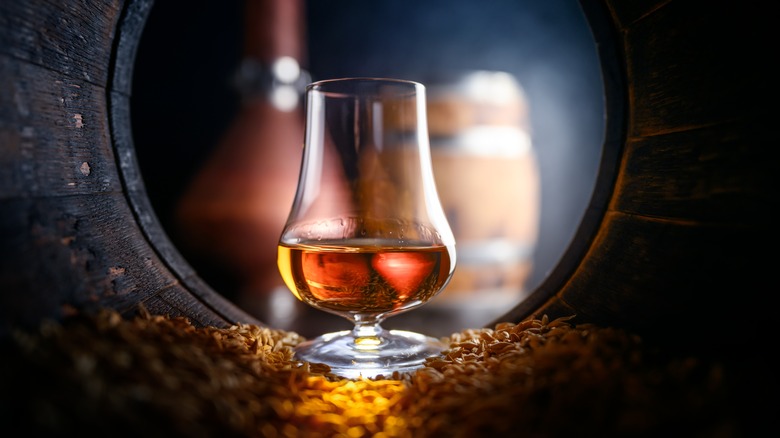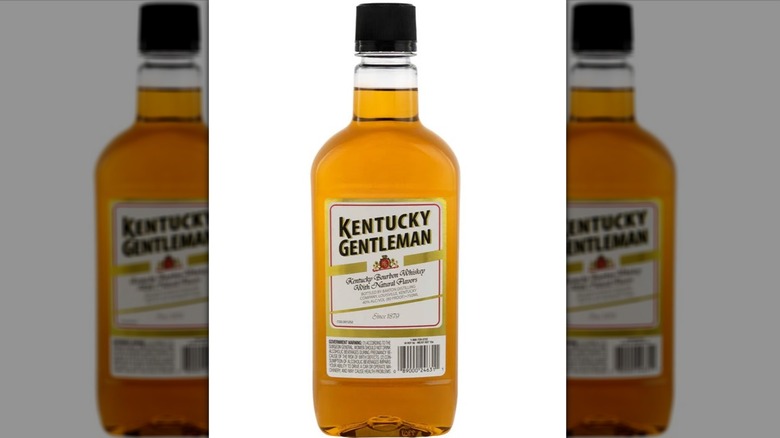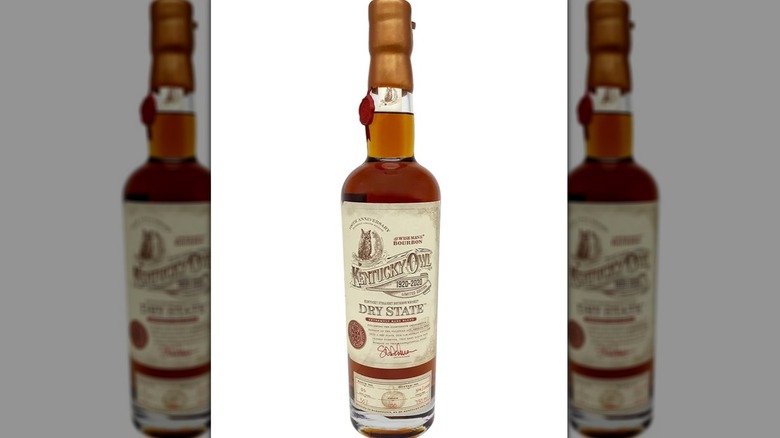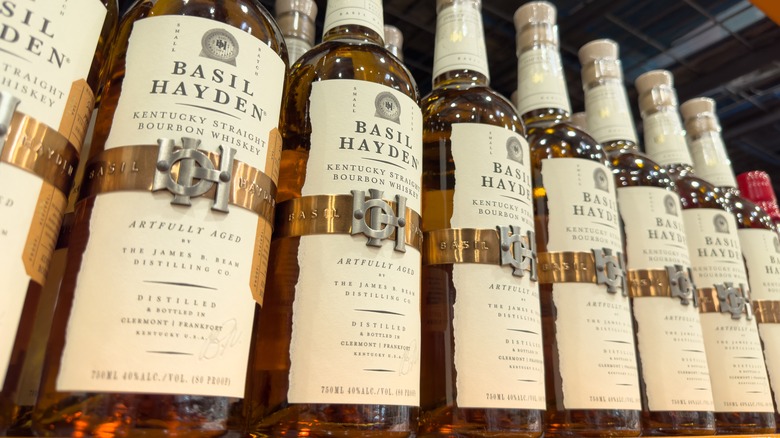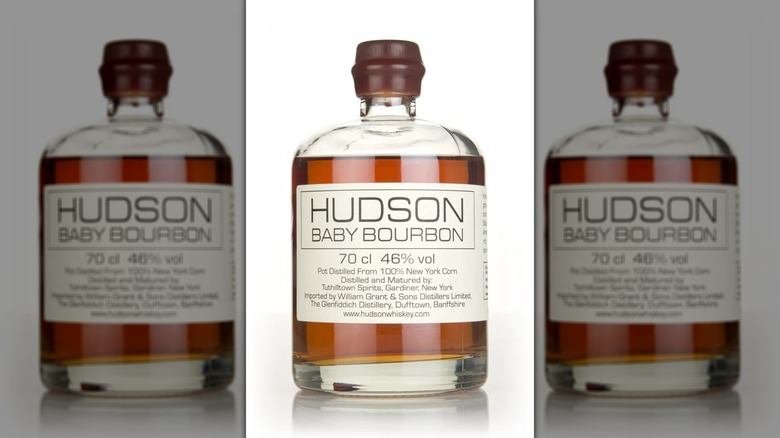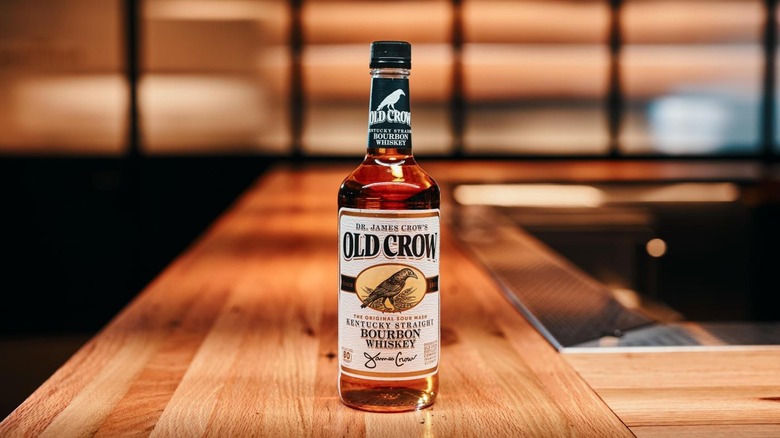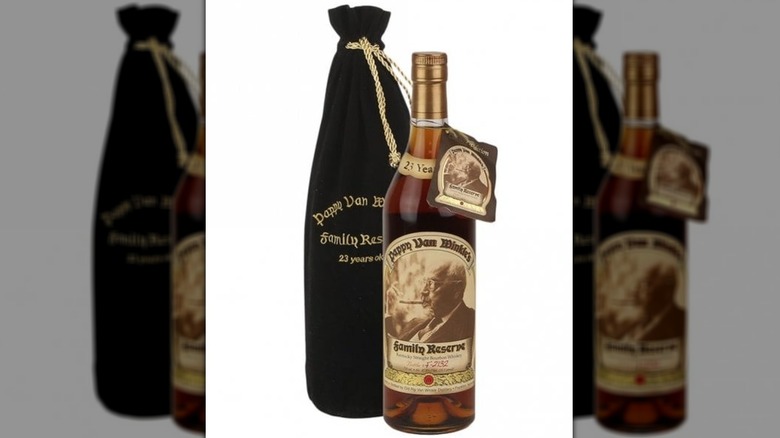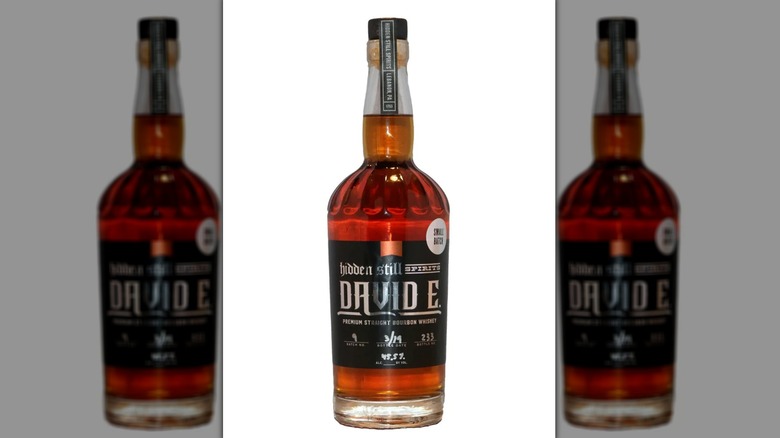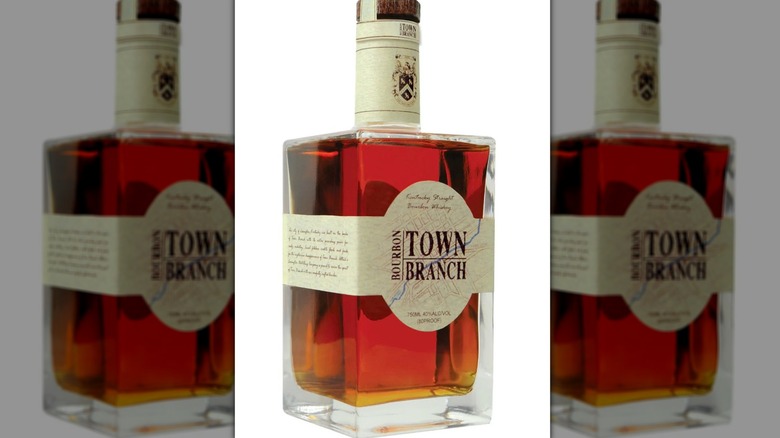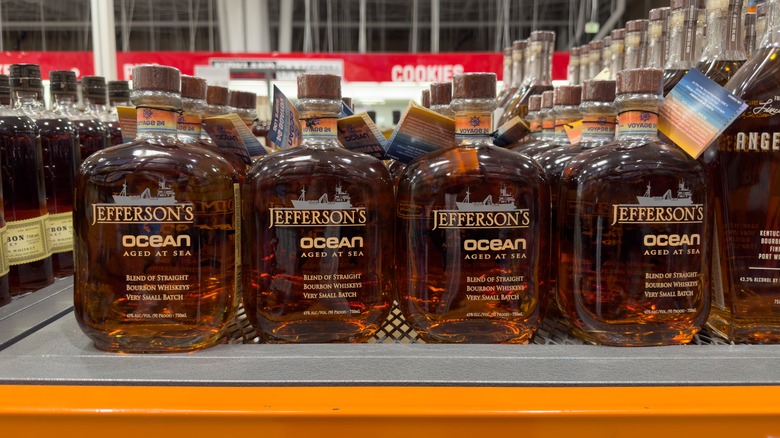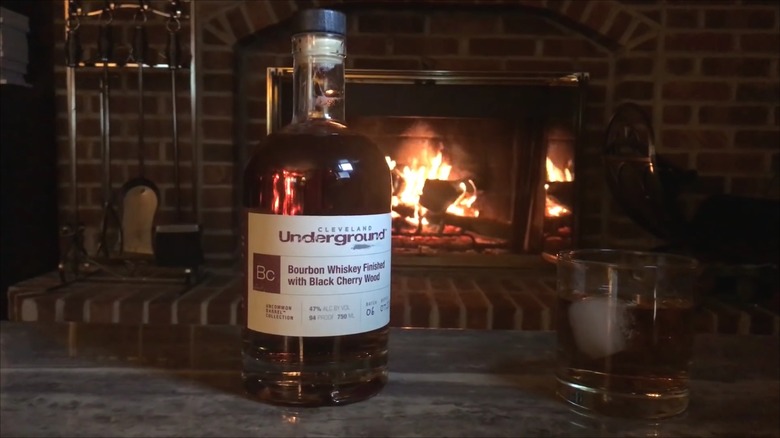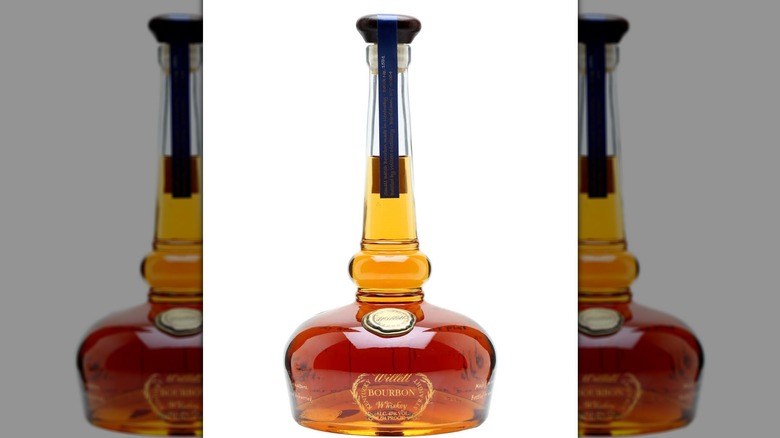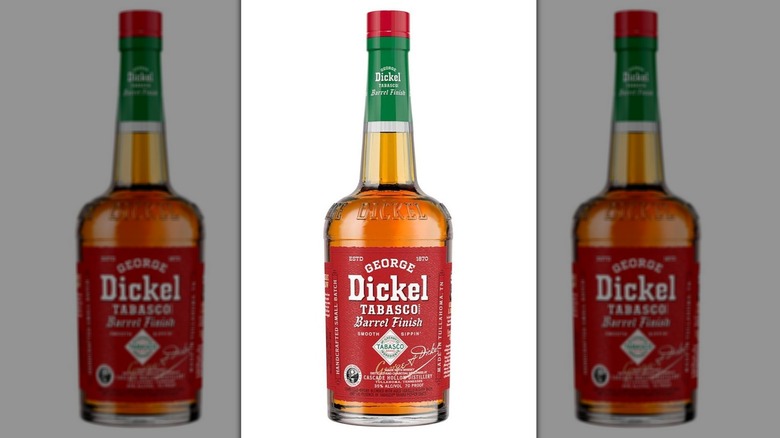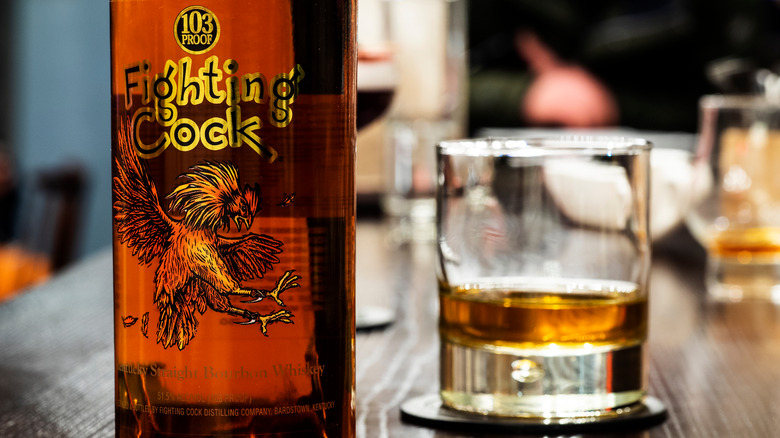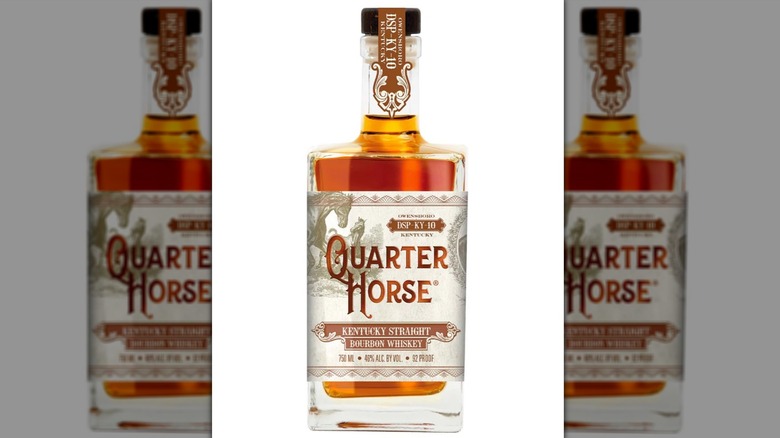14 Bourbons That Aren't Worth Buying
Bourbon, a type of whiskey, has been experiencing a notable boom in popularity since the early 21st century. This growth has had many effects on the industry. The country's largest distilleries are undergoing massive expansions, new products are flooding the market, and many bourbons are selling at high, often inflated, prices. While much of this is good for bourbon, it also means that there are plenty of products on the market that are not worth buying, be this because they are overpriced or are just downright bad. What follows are some of those bourbons.
When it comes to bourbon, everyone has their own likes and dislikes. This makes giving general advice difficult. However, there are some characteristics that define good bourbon, namely balance. The key to bourbon shopping is finding a product that contains these characteristics — and meets your own personal preferences — without being overpriced. Unfortunately, as the following products demonstrate, there's plenty of bourbon out there that fails to meet these standards. Prices may vary based on location.
Kentucky Gentleman
Kentucky Gentleman is a bargain bourbon that often retails for under $13.50 for a 1.75 liter bottle. While most customers know they're not getting a world class bourbon at this price, Kentucky Gentleman still manages to surprise many of them with just how bad it is. Several critics and whiskey writers have noted that Kentucky Gentleman offers little to no aroma. In the mouth, the 80-proof bourbon is inoffensive with the predominant flavor being a chemical sweetness. The liquid is also watery and slightly astringent; it offers nothing in the way of complexity or balance.
Kentucky Gentleman's almost unique ability to offer nothing but sweetness is down to how it is made. Technically, Kentucky Bourbon isn't actually a bourbon but a blended whiskey, as it is made up of 51% straight bourbon and 49% neutral grain spirit. This huge proportion of neutral grain spirit offers next to nothing aside from alcohol content and successfully dilutes the flavor and aroma of the straight bourbon, resulting in an incredibly insipid final product.
When compared to straight bourbons that are sold at similar prices, such as Very Old Barton 80 proof and Evan Williams Kentucky Straight Bourbon, Kentucky Gentleman's failings appear even starker. In short, this bourbon is not worth buying, even at this low price.
Kentucky Owl Dry State
Many exclusive bourbons sell for thousands of dollars on secondary websites, but it is rare to see one given a four figure price tag sticker price right out of the gate. This is exactly what happened when Kentucky Owl released Dry State, a bourbon made from a blend of whiskeys — all having been aged for at least 12 years – to celebrate 100 years since prohibition started. Limited to 2,000 bottles, this release was highly anticipated and many connoisseurs and collectors happily paid the $1,000 price as soon as the bourbon was available.
While the COVID-19 pandemic made people a lot more comfortable with buying top-shelf spirits, these people had to concede that they bought a somewhat underwhelming bourbon. Kentucky Owl Dry State does contain a host of flavor notes such as cocoa, fudge, and oak on both the nose and the palate, however, customers and critics both state that, while flavorful, complex, and balanced, this bourbon just does not deliver on its incredibly high price tag. To make matters worse, many experts express the view that several of Kentucky Owl's other offerings, including a bourbon that retailed at $300, are far superior to Dry State.
Basil Hayden Kentucky Straight Bourbon
Few products draw as much ire from the bourbon-drinking community as Basil Hayden Kentucky Straight Bourbon. The reason for this is simple: People think that the bourbon is priced far higher than its quality warrants. Retailing at around $40 to $45, Basil Hayden Kentucky Straight Bourbon sits in the bracket of premium bourbon and yet it offers a thin, slightly weak flavor profile. This isn't to say it is bad. In fact, many people point out that if sold for around $20, this bourbon would be well-liked. However, it just lacks the presence most people associate with bourbon sold at a premium price point.
That being said, there are benefits to this 80-proof bourbon's modest style. Namely, it is held up as a great bourbon for beginners who might struggle with the intense flavors of other premium products. However, at this price point we'd recommend buying a variety of other bourbons that have significantly more character.
Hudson Baby Bourbon Whiskey
Tuthilltown Spirits, the company that produced Hudson Baby Bourbon Whiskey, made a point of highlighting in its marketing material that loud music was played while the bourbon aged. This supposedly agitated the liquid and developed its taste. Unfortunately, even this loud music could not drown out the slew of negative reviews this product received, and, today, Hudson Baby Bourbon Whiskey is renowned in the bourbon world for being one of the worst tasting products out there.
Aside from being gimmicky, the musical approach did not have the desired effect. On the nose, this bourbon smells incredibly young and astringent. Words bourbon lovers have used to describe the bourbon's flavor include bitter coffee, acne cleaner, and burnt mushrooms.
We hate to say it, but the one redeeming facet of this bourbon is that Hudson Whiskey has discontinued it. Despite this, bottles of the bourbon are still available for sale online for around $40, a staggering amount for what is a hugely disappointing whiskey. Do yourself a favor and don't even think about spending this amount, or indeed any money, on Hudson Baby Bourbon Whiskey.
Old Crow Bourbon Whiskey
Everything about Old Crow Bourbon Whiskey screams budget bourbon. The bottle it comes in is usually made from plastic and the label itself is incredibly lackluster. That being said, many people purchase Old Crow because, at under $10, it is often the cheapest bourbon stocked in any given store.
Unsurprisingly, the bourbon tastes as cheap as it looks. Its aroma is dominated by ethanol and this is reflected in the taste which presents a harsh, alcoholic burn. Some reviewers note the presence of several flavor notes, including cloves and leather, which, when combined in one glass, make Jim Beam's Old Crow unforgivingly bitter.
Old Crow was the first brand to use the sour mash process to produce bourbon in the United States. This process sees the same family of yeast kickstarting the fermentation of every batch of whiskey, supposedly improving its consistency. Unfortunately, Old Crow is consistently unappetizing and we'd suggest that its entire production process be reconsidered if the brand wants to produce a drinkable bourbon in the future.
Pappy Van Winkle 23 Year
Ever since The Beverage Tasting Institute awarded Pappy Van Winkle Family Reserve 20 Year Old a score of 99 out of 100 in 1998, the brand has enjoyed immense popularity. Various Pappy Van Winkle bourbons are now sold annually, ranging from a 10 year all the way up to a 23 year. All these bourbons are known for having an astoundingly buttery texture and a long, complex finish.
Pappy Van Winkle 23 Year is one of the brand's most sought after bourbons. Many effusive reviews claim that it is one of the most complex bourbons around, boasting a huge array of well balanced flavors. Despite this flavor and the brand's esteem, Pappy Van Winkle 23 Years retails at just under $300 on the primary market. However, demand for the product is so high that it is almost impossible for customers to buy any Pappy Van Winkle, especially the 23 year old, at the manufacturer's suggested retail price.
The vast majority of people trying to buy Pappy Van Winkle 23 Year are forced to do so from retailers on the secondary market with prices often exceeding $5,000. This is an unbelievable amount of money even for a bourbon of this caliber. Instead of forking out this much, we'd recommend purchasing cheaper bourbons of an equitable quality, such as Old Forester Birthday Bourbon. Failing that, customers could try to find one of the rare bars that sells servings of Pappy Van Winkle at cost price.
David E. Pennsylvania Straight Bourbon Whiskey
David E. Pennsylvania Straight Bourbon Whiskey is another premium bourbon that fails to live up to the standards associated with its price tag. Retailing at $45, this is by no means a cheap bourbon, however it does have some similarities to one, namely its thin, watery body and a flavor profile that would be overbearingly sweet were it not for an unpalatable oakiness.
This bourbon is double oaked, meaning it is aged in two periods, both of which take place in brand new American oak barrels. While giving the marketing team something to work with, this process does not seem to benefit David E. Pennsylvania Straight Bourbon Whiskey with some suggesting that a different maturation process designed with the goal of mellowing the bourbon out would go a long way in improving its drinkability.
Town Branch Kentucky Straight Bourbon
Town Branch Kentucky Straight Bourbon is a 90 proof bourbon that has won numerous awards, including a gold medal from both the Beverage Tasting Institute and the San Francisco World Spirits Competition. While the people involved with these competitions describe the bourbon as presenting flavors of tropical fruit and fudge, some customers disagree. In a cutting review, one person wrote on Reddit: "[It] Tasted like latex gloves soaked in ethyl alcohol. I apologized to my drain before I poured the whole bottle down it."
Given that Town Branch Kentucky Straight Bourbon retails at around $35 and comes well-presented in a robust bottle, many customers have high expectations when they go to take their first sip of the nicely colored bourbon. The nose only compounds this excitement; Town Branch Kentucky Straight Bourbon has a wonderful aroma of citrus, smoke, and sweetness. However, the bourbon leaves them disappointed thanks to its harsh, unappetizing flavor.
Jefferson's Ocean Aged at Sea
Jefferson's is a brand that does not distill its own bourbon. Instead, the company experiments with different maturation processes to help its products standout. Jefferson's Ocean Aged at Sea bourbon is made using perhaps the most infamous process of all. For this product, barrels containing the bourbon are placed on boats that sail to various ports around the world. The idea is that, due to temperature changes and the sea's jostling, the bourbon "hyper-ages" while also taking on briny, marine notes.
Unfortunately, for Jefferson's, this process is viewed by most bourbon drinkers as nothing more than a gimmick. This bourbon is also expensive, usually retailing for around $80. At this price, customers expect both quality and consistency. Jefferson's Ocean offers neither. Batch-to-batch, voyage-to-voyage, Jefferson's Ocean fluctuates wildly. For example Voyage 17 presented overwhelmingly bitter notes of tobacco and leather while Voyage 23 was extremely light in flavor, boasting little else but faint the flavor of caramel and vanilla. It seems the only thing consistent about Jefferson's Ocean Aged at Sea bourbon is how underwhelming it is.
Cleveland Underground Black Cherry Wood
Cleveland Whiskey is another company that seeks to differentiate its products through innovation. In Cleveland Whiskey's case this innovation comes via the use of alternative woods, not just American oak, to mature its spirits.
Generally, bourbon is aged for several years in charred American oak barrels. However, Cleveland Whiskey's product is only aged in classic American oak barrels for six months before being placed in steel containers with pieces of different woods added alongside to improve the bourbon's flavor. Known as the underground series, these bourbons are flavored with everything from hickory to sugar maple.
Cleveland's Underground Black Cherry Wood is a 94 proof bourbon, matured, as the name suggests, in tanks containing black cherry. However, this maturation process does not seem to yield satisfactory results. Customers describe this bourbon as thin and lacking any complexity at all. Worst still, many state that it tastes young, retaining a harsh bite of alcohol that is very unappetizing. The general consensus is that this is a very bad, underdeveloped bourbon and, with a bottle costing over $40, it's far from anyone's idea of a sensible purchase.
Willett Pot Still Reserve
Retailing at around $60, Willett Pot Still Reserve is by no means a cheap bourbon. This fact is hammered home by the bottle which is beautifully crafted to look like a miniature pot still. Unfortunately, the bourbon itself fails to live up to its price and presentation thanks to a watery body and a flavor that leans sweet with only a hint of oak and spice.
As with several other bourbons mentioned in this article, Willett Pot Still Reserve is not a terrible bourbon, it is just priced far too high for what it is. This becomes especially apparent when it is compared to good performing affordable bourbons such as Wild Turkey 101. This $25 bottle vastly outperforms Willett Pot Still Reserve in just about every way and for less than half its price.
Given that it comes in a fancy bottle, bourbon enthusiasts have been quick to label Willett Pot Still Reserve as a bourbon of much style but little substance. Unfortunately, we would have to agree with them.
George Dickel Tabasco Barrel Finish
George Dickel Tabasco Barrel Finish made headlines when it was released. After all, how often do you see whiskey and hot sauce companies collaborate? However, what many headlines failed to note was that the drink is not actually classified as a bourbon. Depending on who you ask, it might not be called Tennessee whiskey either because it has several ingredients added to it including the essence of Tabasco brand pepper sauce. Regardless of how it is defined, most people agree that this whiskey is pretty horrible.
George Dickel Tabasco Barrel Finish is bad for the reasons you would expect. Its aroma and flavor is dominated by an overbearing hot sauce spice with just about every other note you'd associate with whiskey being absent. There is no oakiness, smoke, or baking spice at all. In fact, the only things critics said they could smell and taste aside from hot sauce were cough syrup and vomit.
The product's only redeeming use seems to be in the making of bloody Mary cocktails. But with this product being priced at around $27, we can think of numerous cheaper ways of improving a bloody Mary, such as adding a pinch of Old Bay seasoning.
Fighting Cock Bourbon
Fighting Cock is a bourbon that stands at 103 proof and used to be aged for six years. Unfortunately, that aging process was considerably shortened to 36 months in 2015. The bourbon suffered as a result and Fighting Cock has struggled to woo any serious bourbon drinkers ever since. Known to be young, mild, and one-dimensional, no facet of this bourbon warrants any kind of response until its finish which is dominated by an unpleasantly bitter cacao note. Even then, it's unlikely to yield anything but a grimace.
Sold around the $20 mark, this bourbon just does not offer enough to make it worth buying. As one person noted on Reddit: "It is young, not particularly flavorful, and surprisingly light and evasive. The 'Kickin' Chicken' not only lags other sub-$20 bourbons but is miles behind everything in the $20-$25 range." While solid enough to drink alongside a mixer, Fighting Cock lacks the character to make it a good sipping bourbon.
Quarter Horse Kentucky Bourbon
Quarter Horse Kentucky Bourbon is another discontinued bourbon that is still widely available online. There is a simple explanation as to why so many of the bottles remain unopened and unsold; nobody who knows anything about bourbon wants to drink them.
The product was made using patented machinery which was supposed to speed up the maturation process. As a result, the finished bourbon was only matured for 12 months. Unfortunately, it tastes like it with the flavor of grain dominating the product's flavor profile. It also offers plenty of alcoholic burn and little in the way of anything else.
While the bourbon tastes unappetizing, its aroma is even worse. As one individual noted on Reddit: "Quarter Horse offers the scent of cheap red wine [...] The unmistakable odor of wet hay, which is common to young, underaged bourbons, is also prominent. It is the most unpleasant and offending nose I have ever experienced from any bourbon." As such, we do not recommend seeking this discontinued bourbon out.
